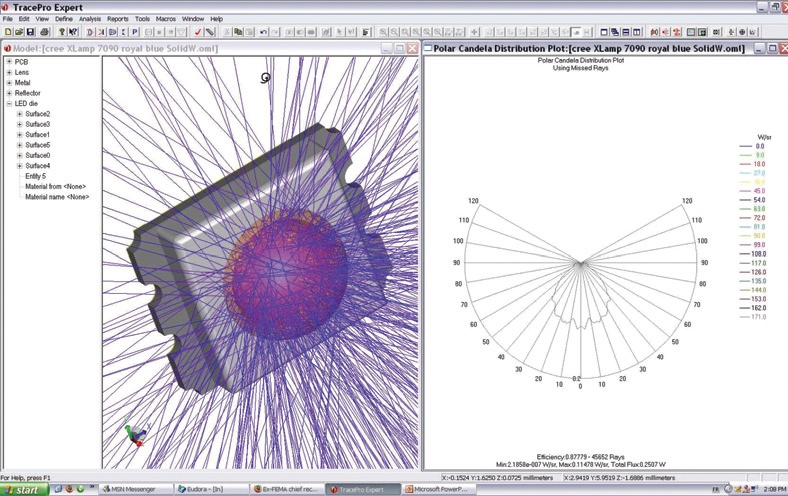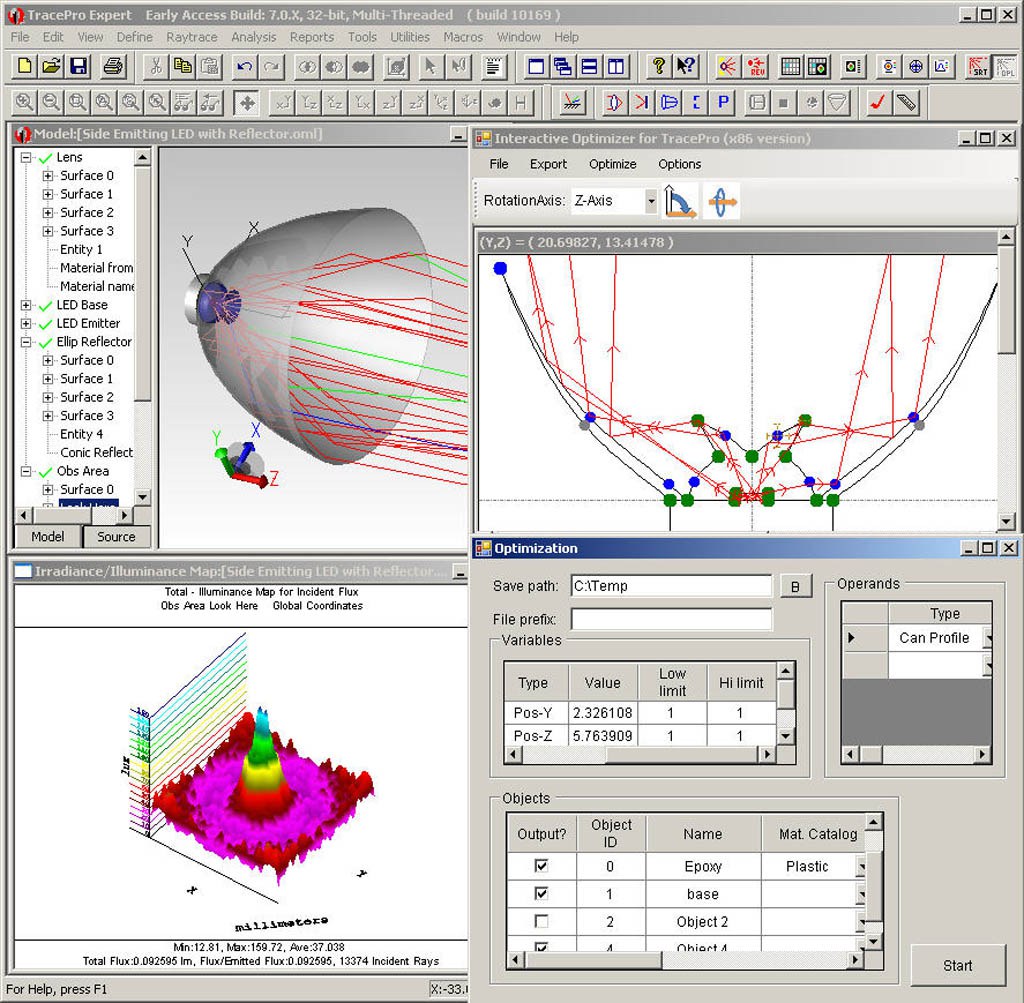- / Hizmetlerimiz
- LAMBDA
Lambda Research Corporation

Lambda Research Corporation, a privately-held company founded in 1992, is an industry leader in
optical analysis, illumination system design and analysis, and custom software development. Lambda Research Corporation publishes TracePro, an award-winning opto-mechanical design software used for designing and analyzing illumination and optical systems.
TracePro streamlines the prototype to manufacturing process by combining an intuitive 3D CAD interface, advanced utilities, and seamless interoperability with other mechanical design programs.
For more information about Lambdares click here

Optonom Scientific Instruments Ltd.Co. has been signed distributorship agreement in 2017 and the company is the unique distributor of TracePro, OSLO, RayViz in Turkey.
TracePro® is an award-winning opto-mechanical design software used for designing and analyzing illumination and optical systems.
Illumination Design, Stray Light Analysis and Optimization Software streamlines the prototype to manufacturing process for illumination
systems with a familiar CAD interface, 3D optimization, extensive model library, and seamless interoperability with popular CAD systems. TracePro offers users a sophisticated and powerful optical design environment combined with a short learning curve to accelerate product time-to-market.
TracePro models are created by importing lens design or CAD files, as well as by directly creating the solid geometry within TracePro. Models can be modified by using move, rotate, scale, sweep, and revolve object and surface operations via the user-friendly, 3D CAD interface. Primitive solids, such as tubes, blocks, cones, and spheres; and optical elements, including lens elements, reflectors, and Fresnel lenses, can also be inserted.
TracePro utilities allow interactive sketching to quickly enter 2D and 3D profiles; and then extrude, revolve, and combine
these surfaces to create sophisticated geometry, like lightpipes, reflectors, and free-form optics. Visualization options include: photorealistic rendering, solid rendering, silhouette, wireframe, and hidden line views. Users also have the ability to pan, rotate, zoom, and perform other standard geometry manipulation techniques. TracePro’s multiple document, multiple view architecture allows you to have several views of the same model open at the same time, and several models open at the same time. Copying and pasting objects from one model to another requires just a couple of keystrokes or menu picks.


Light Sources
TracePro simulates the distribution of luminous intensity, irradiance/illuminance, and flux throughout a model or at selected surfaces by tracing rays using the Monte Carlo method. Light sources are modeled by emitting rays.
Additionally, TracePro’s Surface Source Property Utility enables graphed surface source properties to be imported directly from a manufacturer’s datasheet.
Ray sets are defined using any combination of three methods:
• Grid – specify spatial and angular beam profile, wavelengths, and dimensions along with beam orientation, polarization state, and degree of polarization.
• Surface – specify angular distribution and emission spectrum from one or more surfaces of any solid object using luminous flux or irradiance/illuminance. Surfaces can also be defined as blackbody or graybody radiators. Any combination of surfaces can be defined as sources.
• Ray File – predefined ray tables consisting of XYZ starting points and direction vectors, polarization states,
wavelength data, and the initial flux value or Stokes vector for each ray. Ray files are typically created from source measurements or theoretical calculation.


Visualization & Rendering
TracePro has several surface and ray display options that help identify problem areas and visualize energy propagation through any optical or illumination system. Large and readable irradiance/illuminance and candela plots with linear or log scales, several color palettes, profiles, and 3D viewing options enable understanding of the flux or irradiance on any surface. TracePro’s Photorealistic Rendering feature uses source and optical properties of the model and real ray tracing and photon mapping algorithms to enable you to visualize your design’s lit appearance from any position.
CAD Integration
TracePro offers seamless integration with SolidWorks using the TracePro Bridge™ for SolidWorks, an add-in to SolidWorks that allows optical properties to be added and saved directly to the SolidWorks model, preserving mechanical and optical
properties as models are exported from SolidWorks to TracePro. As a result, design productivity is dramatically improved without sacrificing performance or functionality.
For detailed document click here